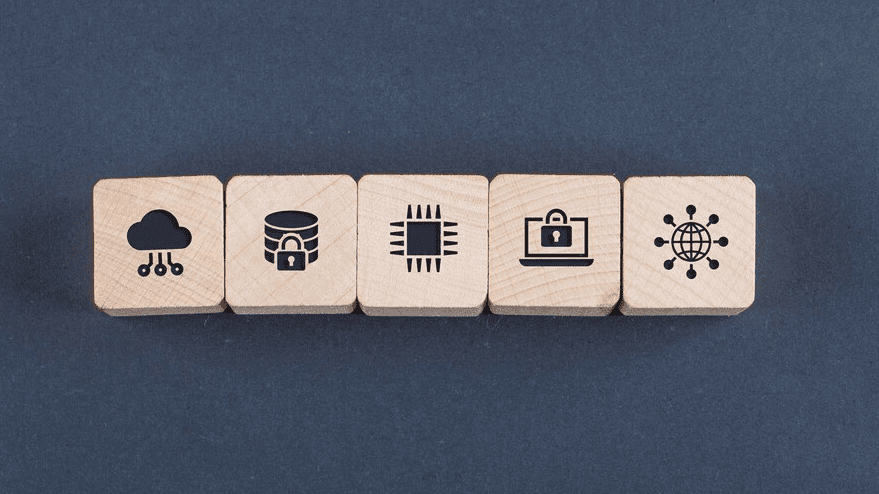When it comes to cloud computing, understanding the difference between IaaS, PaaS, and SaaS is crucial for startups. These three models offer varying levels of control, customization, and scalability. In this blog, we’ll break down each model with real examples, explain why SaaS is the ideal choice for startups, and highlight how Agami Technologies excels in providing Custom SaaS solutions.
1. What is IaaS?
Infrastructure as a Service (IaaS) is the foundation of cloud computing. Essentially, it provides virtualized computing resources over the internet, which allows startups to manage servers, storage, and networking without needing to invest in physical infrastructure.
Key Features of IaaS:
- Complete control over infrastructure.
- Flexible scalability for dynamic needs.
- Pay-as-you-go pricing models to reduce upfront costs.
Real Example of IaaS:
For example, Amazon Web Services (AWS) enables startups to host applications, store data, and scale operations effortlessly. Imagine a startup developing an AI platform—it can use AWS EC2 to run algorithms without investing in costly hardware.

2. What is PaaS?
Platform as a Service (PaaS) builds on IaaS by offering a platform for developers to build, test, and deploy applications. Unlike IaaS, it eliminates the need to manage the underlying infrastructure, which allows startups to focus entirely on innovation.
Key Features of PaaS:
- Pre-configured development tools save time.
- Reduced time to market enhances agility.
- Scalable platforms ensure easy deployment.
Real Example of PaaS:
Take Google App Engine, for instance. A startup launching an e-commerce app can deploy it quickly using App Engine, skipping the complexities of managing backend infrastructure. As a result, the team can focus solely on improving the user experience.
3. What is SaaS?
Software as a Service (SaaS) delivers fully functional software applications over the internet. Startups can access these applications without the hassle of installation or maintenance, making SaaS the most user-friendly option.
Key Features of SaaS:
- No infrastructure or software management required.
- Accessible from any device with internet connectivity.
- Subscription-based pricing models for flexibility.
Real Example of SaaS:
Consider Slack, a widely-used communication tool. Instead of building their own collaboration platform, startups can subscribe to Slack and immediately enjoy its features, helping them streamline team communication and project management.

Why SaaS is Perfect for Startups
For most startups, SaaS emerges as the best choice. Here’s why:
- Cost-Effective: To begin with, SaaS eliminates the need for upfront infrastructure investments or IT teams.
- Time-Saving: Moreover, ready-to-use solutions mean startups can focus on growth rather than technical maintenance.
- Scalable: As your business grows, you can upgrade your subscription with ease.
- Customizable: Finally, many SaaS platforms offer industry-specific features, allowing startups to tailor solutions to their needs.
How Agami Technologies Supports Startups with Custom SaaS
At Agami Technologies, we understand that one-size-fits-all SaaS solutions often fall short. Therefore, we specialize in building Custom SaaS platforms that align with the unique challenges startups face.
Agami’s Approach to Custom SaaS:
- Understanding Your Vision: First and foremost, we collaborate closely with startups to identify pain points and opportunities.
- Building Scalable Solutions: Next, we design platforms with scalable architecture to grow alongside your business.
- Affordable Development: Additionally, our pricing ensures that even early-stage startups can access premium solutions.
- Real Example: Schezy by Agami Technologies For example, Agami Technologies developed Schezy, an advanced school management system tailored for the education sector. Schezy streamlines administrative tasks, enhances communication between teachers and parents, and improves overall efficiency in school operations. One of the schools using Schezy reported a 50% reduction in manual paperwork and a 30% improvement in parent-teacher engagement, enabling them to focus more on student outcomes.
IaaS, PaaS, SaaS: A Comparison Table for Startups
| Feature | IaaS | PaaS | SaaS |
|---|---|---|---|
| Control | Full control over infrastructure. | Control over apps, limited infra. | Minimal control, ready-to-use. |
| Scalability | High, but requires management. | Built-in scaling. | Automatic scaling. |
| Use Case | Hosting virtual servers. | Developing custom applications. | Accessing software instantly. |
| Example | AWS, Microsoft Azure. | Google App Engine, Heroku. | Slack, Salesforce. |

Key Takeaway : IaaS, PaaS, SaaS
Understanding the difference between IaaS, PaaS, and SaaS enables startups to make informed decisions. While IaaS and PaaS cater to specific needs, SaaS stands out as the most practical option for startups.
Struggling with SaaS onboarding? Read our detailed guide on challenges and solutions here.
At Agami Technologies, we take SaaS to the next level by providing custom solutions tailored to your startup’s unique requirements. Whether you’re part of the startup 500 or just starting your journey, our expertise ensures your success.
Want to learn how to build a successful SaaS on a bootstrap budget? Read our blog to explore lessons from Agami Technologies.
Ready to empower your startup with a Custom SaaS platform? Request a Free Demo Today!

